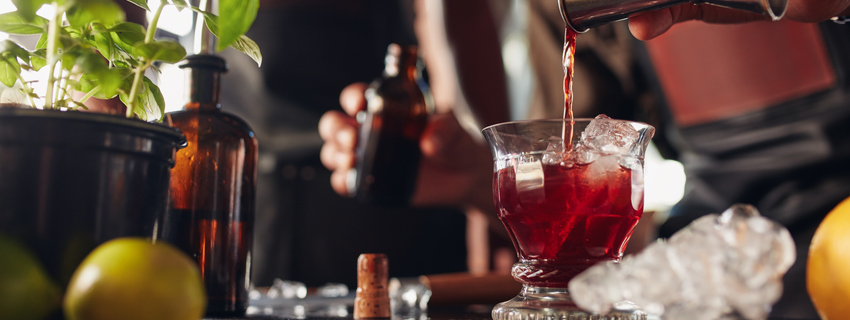
Photo Credit - iStock/jacoblund
Bitters are a fundamental cocktail component with origins rooted in medicinal tinctures. There is a seemingly infinite variety of bitters being produced commercially with new brands and flavors hitting the market daily; the vast majority of them are made with a base ingredient of ethanol. There are also a number of bitters based not on alcohol, but on glycerin. Some people in our industry look at glycerin-based bitters and think: “Sub-par”. I look at glycerin-based bitters and think: “What even is glycerin?”
Glycerin is an organic compound that occurs naturally but can also be produced synthetically from sugars. It is water and alcohol soluble, colorless, odorless, and non-toxic. It’s widely used in the food industry as a thickener and a sweetener as it’s roughly 60% sucrose. It’s an effective solvent for aromatic compounds and is less volatile than ethanol; it retains flavors and aromas better when exposed to heat and air. In short, glycerin is a solvent that can make non-alcoholic extracts.
Many bartenders discredit glycerin-based bitters because of their lack of alcohol; I view their lack of alcohol as an advantage. They allow you to create more complex layers of flavors when servicing consumers looking to avoid imbibing, and when used in a toddy, their aromas don’t dissipate as significantly as those of alcohol-based bitters. I don’t see them as either inferior or superior. I see them as another tool to utilize in crafting a cocktail to your customer’s specifications. Ultimately, their merit lies in your application.
Side note: I was tempted to refer to glycerin-bitters as “glytters”.


